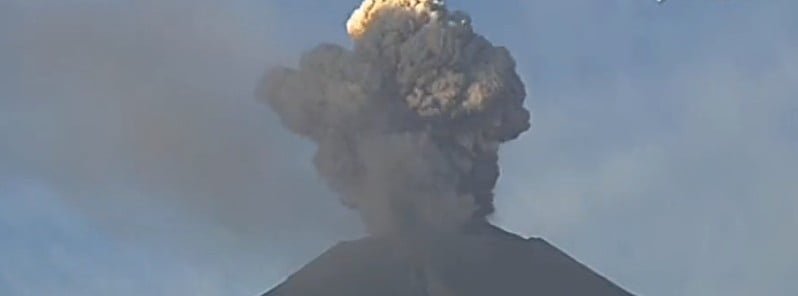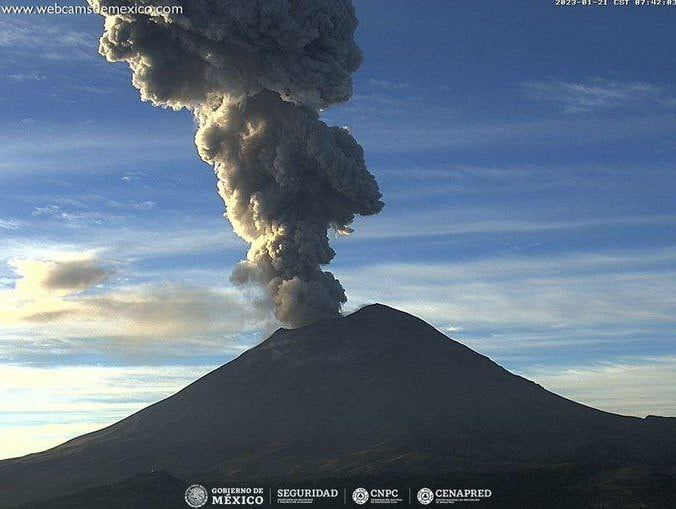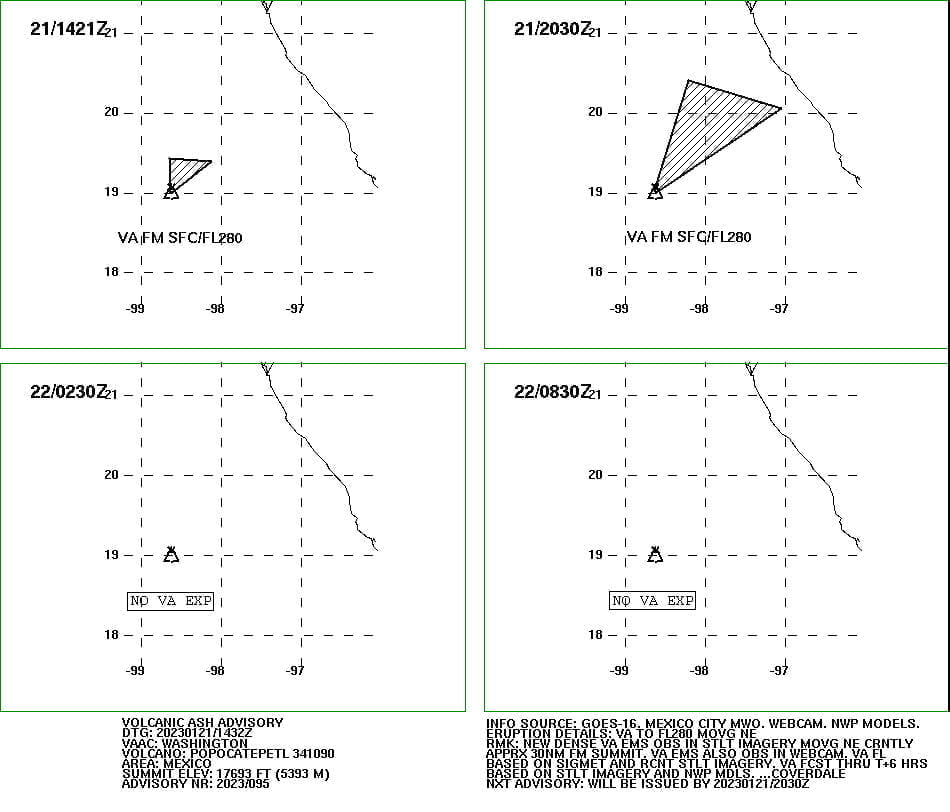Eruption at Popocatepetl ejects dense ash up to 8.5 km (28 000 feet) a.s.l., Mexico

A stronger-than-usual eruption took place at Popocatepetl volcano, Mexico at around 13:38 UTC (07:38 LT) on January 21, 2023.
The eruption generated a plume of thick volcanic ash that reached a height of 8.5 kilometers (28 000 feet) above sea level at 14:21 UTC, as reported by the Washington Volcanic Ash Advisory Center.1
Satellite imagery revealed the ash being carried northeast, about 55 kilometers (34 miles) from the summit.
The alert level for the volcano remains at Yellow Phase Two, the middle level on the three-color scale.


In 24 hours to 17:00 UTC on January 20, the monitoring systems of the Popocatépetl volcano detected 178 exhalations accompanied by water vapor, volcanic gases, and ash. In addition, 151 minutes of tremors were counted.
CENAPRED strongly advises individuals and tourists to avoid approaching the volcano, particularly the crater, as the risk of being struck by falling ballistic fragments is high.
Additionally, during periods of heavy rainfall, it is important to stay clear of the bottoms of ravines as they may be prone to dangerous mud and debris flows.
Geological summary
Volcán Popocatépetl, whose name is the Aztec word for smoking mountain, rises 70 km (44 miles) SE of Mexico City to form North America’s 2nd-highest volcano. The glacier-clad stratovolcano contains a steep-walled, 400 x 600 m (1 312 x 1 968 feet) wide crater.
The generally symmetrical volcano is modified by the sharp-peaked Ventorrillo on the NW, a remnant of an earlier volcano.
At least three previous major cones were destroyed by gravitational failure during the Pleistocene, producing massive debris-avalanche deposits covering broad areas to the south. The modern volcano was constructed south of the late-Pleistocene to Holocene El Fraile cone.
Three major plinian eruptions, the most recent of which took place about 800 CE, have occurred from Popocatépetl since the mid-Holocene, accompanied by pyroclastic flows and voluminous lahars that swept basins below the volcano. Frequent historical eruptions, first recorded in Aztec codices, have occurred since precolumbian time.2
References:
1 VA ADVISORY – Popocatepetl, Mexico – Washington VAAC – 14:32 UTC on January 21, 2023
2 Popocatepetl – Geological summary – GVP
Featured image credit: Webcams de Mexico

Commenting rules and guidelines
We value the thoughts and opinions of our readers and welcome healthy discussions on our website. In order to maintain a respectful and positive community, we ask that all commenters follow these rules.